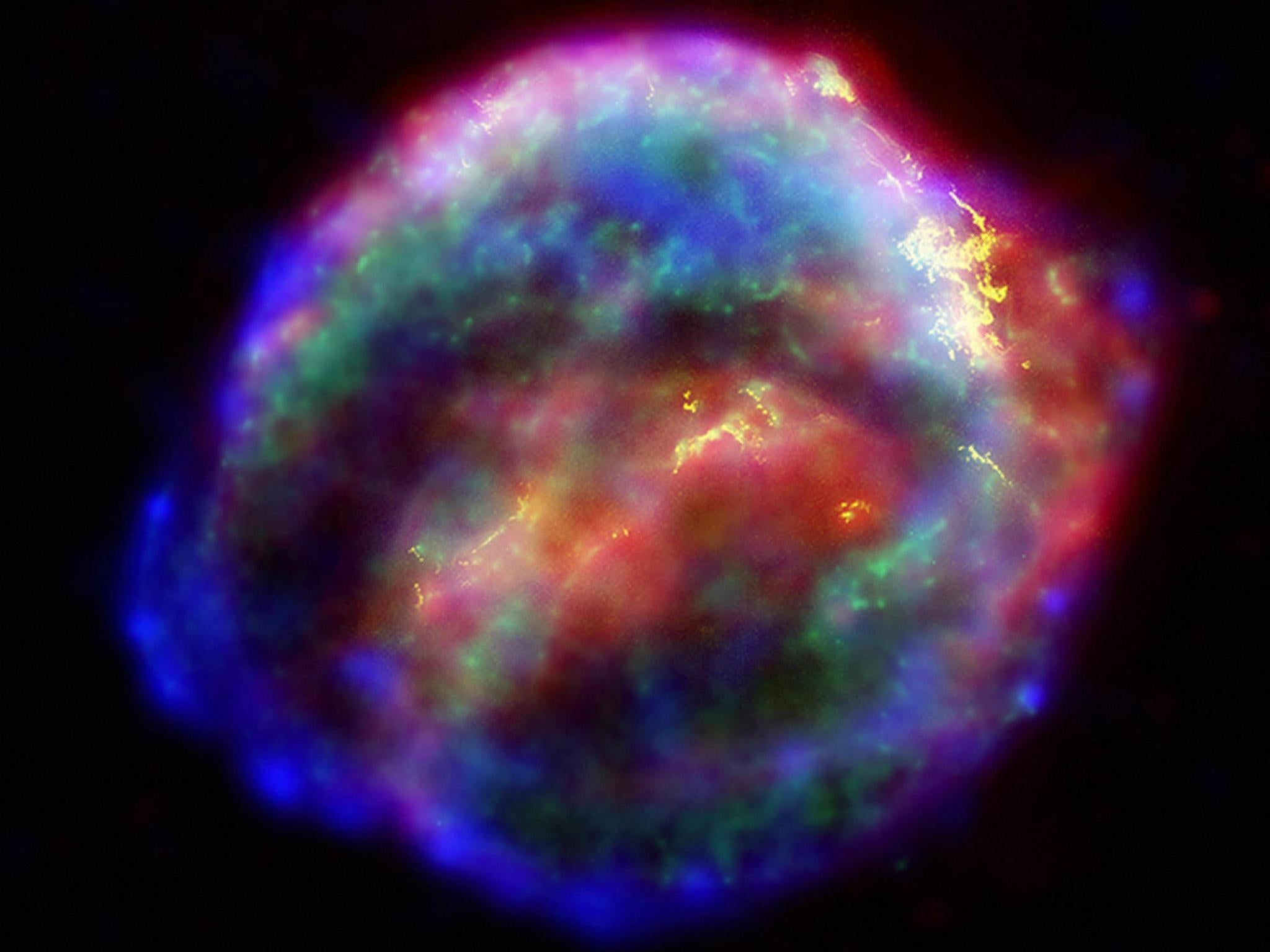Supernova exploding in space sprinkled the Earth with stardust, scientists say
The huge, cosmic explosions would have been visible from Earth and might have helped decide how humans evolved

The Earth is scattered with shrapnel from one of the universe’s most spectacular explosions, scientists have said.
The blast of a supernova millions of years ago caused special radioactive isotopes to be scattered across the Earth, where they can still be found today, according to a new study.
The two huge explosions might have taken place a mere 300 light years away — meaning that they would have lit up the Earth’s sky as brightly as the moon.
The new research looked at sediment that was brought up from the ocean floor over decades of work. In there, they found a particular, rare iron isotope that appears to have made its way from space.
Some have proposed a supernova explosion as accounting for the periodic extinctions that happen to life on Earth — other explanations for which have included climate change and collision with a comet. But while this newly-suggested explosion wouldn’t have been close enough to wipe out life, it shows the huge impact that such an event could have and may have led to significant developments in the evolution of life on Earth.
The shrapnel was dropped after two explosions, the scientists have said after running the data through models that are able to predict how it was dropped. The first came from a star about 9 times as large as our own, 2.3 million years ago; that was followed by another explosion by a star that was slightly smaller, about 1.5 million years ago.
Those two explosions came well after the first known members of the Homo genus, which were on Earth about 2.8 million years ago, to which we modern humans also belong.
Join our commenting forum
Join thought-provoking conversations, follow other Independent readers and see their replies
Comments